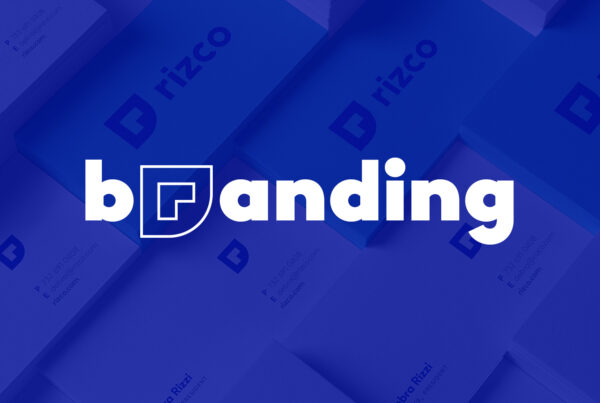Insights From Our Design Team on the Framework for A Successful Website Design
An engaging website experience is more than flashy graphics and words on a page. In fact, several components go into making your brand’s website interactive, fully functioning, and compelling for your audience. After all, it should be the core when marketing your business!
So who better to explain the nitty gritty than our Rizco design team? This month, we sat down with them to talk about the must-haves for building a successful website design.

CONTENT
When outlining the content for your website, you want to focus on more than just writing copy but storytelling through the brand’s unique point-of-view and ensuring critical keywords are present to help with organic search rankings. And as a part of that story, you’ll want to include media assets and visuals that showcase your website topics in a more digestible and fun way for the user. Did you know that your website is fifty-three times more likely to show up first in Google results if it features a video? Here to talk a little more about why content is king, our Partner, Creative Director Keith Rizzi:
“If you’re in the process of creating a website, one of your top priorities is to include attractive and compelling content for your site. This includes writing, videos, infographics, and any engaging pieces you want to implement onto your site. This content will help users understand your website and inform the designers on how to design and develop an engaging page layout. The tricky part here is utilizing content that is both engaging to users and also appeals to SEO. Therefore, catering to both these parties is critical when creating your content.”
– Keith Rizzi, Partner, Creative Director
PAGE HIERARCHY
Page hierarchy refers to the hierarchical arrangement of assets on a webpage and is something the web designer uses as a blueprint for the overall page message. When it comes to page hierarchy, the best tip is to follow the importance of each asset on the page. Our Junior Designer, Eliana Harrison, weighs in on this strategy:
“Visual hierarchy is essential in every aspect of design, but especially when building a website. In order to curate a comprehendible and user-friendly webpage, it is necessary to consider what content is most important for the visitor to view first. This aids in directing the visitor to the call-to-action, whether that be clicking a link or prompting a new action. Not only does visual hierarchy include positioning, but also the color and size of the content in order to highlight the main message of the page.”
– Eliana Harrison, Junior Designer
RESPONSIVENESS
Website responsiveness refers to how a website performs or appears on different devices such as laptops, desktops, smartphones, etc. When developing a website, it’s important to test your website’s responsiveness. Our design team considers this the tenth step in our Rizco 14-Step Website Build Process, which outlines the imperative steps for creating a successful site. Our Director of Technical Design, Sean Healey, shares his thoughts on its importance:
“Responsiveness is a crucial factor in modern web design where a layout behaves in a fluid way, stacking and morphing to the shape of a user’s device. This helps the user take in information in a balanced way no matter how they’re doing it. Without responsiveness, your site runs the risk of being unusable for users across different devices and screen sizes. The more barriers you have between the user and your site, the less time they will spend on it. With responsiveness, your site is accessible via everything from an old desktop computer, to the newest laptop, to the phone in your pocket, to the tablet on the coffee table—removing all the barriers between you and them.”
– Sean Healey, Director of Technical Design
NAVIGATION
When we talk about navigation, we’re talking about how the user moves around the website. This could be through a bar of information at the top of the page or possibly a drop-down menu on either side. No matter how it is set up, easy-to-use navigation can enhance the user experience, thus increasing engagement. Senior Designer, Alexa Saltzman, explains more on the topic:
“An organized, well-designed navigation is essential to directing users to internal website pages. Short, descriptive menu titles and a limited number of menu items will help to create a structure with hierarchy, helping the user interact with the website efficiently. Whether it is the main menu or the footer menu, the quality of the navigation impacts the users’ experience. Effective use of dropdown menus and mega menus can help to arrange the navigation into levels, without making it look cluttered.”
– Alexa Saltzman, Senior Designer
CALL-TO-ACTION (CTA)
A CTA button is a link within the website that guides the user to take the next step in a sale or action to learn or read more on a topic. Designing CTAs for a website is a category all its own, and Alexa provides her recommendations for implementing these buttons:
“While CTA buttons are some of the smallest elements on a website, they have a large impact by guiding users toward taking action. On key pages, such as a home page, landing page, or product pages, it is important to include a CTA “above the fold” or before a user needs to scroll too far down the page. Concise, actionable text, strong color, and strategic placement will help to maximize the success of your CTAs.”
– Alexa Saltzman, Senior Designer
As we’ve learned, a lot of strategic planning, understanding of the brand, design knowledge, creativity, and time goes into building a successful website. But perhaps the most crucial point to any website is a skilled and professional web design team to help carry out your vision and execute it accordingly.
Our design team at Rizco has fifty years of combined experience designing websites, print, and other marketing materials for our clients across multiple industries.
Looking to build or revitalize a website? Check out our expertise and view our team’s design work!


